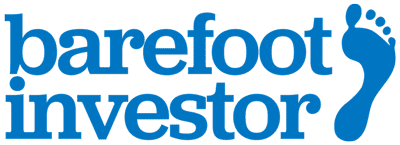What’s the deal with zero interest credit cards?
When you’re doing my job, you just never know who’s going to walk through the door.
One day a woman in her sixties sat down in front of me ... and totally blew me away.
“Let’s start with your debts”, I said, pulling out a piece of paper.
“Well, I have a credit card”, she said.
“And how long have you had it?” I asked, biro in one hand, fingers poised on my calculator.
“Forty-four years”, she replied.
“You mean four years”, I said, correcting her.
“No, I mean forty-four years. My mum gave it to me when I turned eighteen ... and I’ve had it ever since.”
Pluck-a-duck!
She’d been paying interest on the balance longer than I’d been alive.
This woman was from another era … the Bankcard era.
In 1974, banks kicked off Australia’s first credit card, Bankcard, with greedy gusto, mass-mailing cards to customers without them even asking for it. For the poor, it was a revelation. Free money from the bank!
Times change.
Today, credit cards are viewed like cigarettes: expensive, unnecessary, and lethal if you get hooked.
Sure, there are still some poor bastards who can’t quit and continue smoking (and paying credit card debt), but the majority of people avoid them, especially young people.
Why?
Two reasons:
First, like smoking, we now know the truth. Credit cards are a rort; the majority of cards haven’t budged from charging nosebleed 20% rates despite interest rates being basically zero.
Second, as a consequence of this, young people have moved on to alternatives like Afterpay, which to me are the equivalent of vaping.
(And, like vaping, Afterpay claims it’s (financially) much healthier for you — which explains how they’ve managed to slip through the responsible lending provisions — yet where there’s smoke, there’s financial fire.)
And that brings us to today, with two old bankers, NAB and Commbank, recently launching ‘zero-interest’ products in a last-ditch effort to make credit cards cool again.
CommBank called theirs the ‘Neo MasterCard’ (hey, the kids like that Matrix film, right?).
NAB called theirs ‘StraightUp Card’.
Really?
This from a company that admitted to the Royal Commission that its customers’ money all too often accidently fell into NAB’s pockets.
Straight up.
Both cards promise “no interest payments, no late payments, no foreign currency fees, ever”.
So what’s the catch?
Well, these cards only offer small amounts of credit, up to $3,000.
And they charge a monthly fee, from $10 for a $1,000 limit up to $22 for a $3,000 limit.
The rub is that the banks charge the monthly fee regardless of how much you spend (unless you don’t use your card at all — in which case you don’t pay the fee that month).
Yet in some cases the monthly fees can often work out to be … almost as much as a regular credit card.
So what do I think?
I think we should view all of these products as coming from cigarette salesmen.
Here’s the rub: all of these products train young people to spend money they don’t have.
And that is a terrible way to live your life long term, and often leads to disastrous consequences.
Case in point: my sixty-something client.
She’d spent the last four decades working two jobs … just to pay some banker’s bonus. (Bonuses.)
I looked at the budget we’d just written out, which showed about half her pay was going in interest.
“I just don’t see how this works”, I said bluntly, leaning back in my chair.
She pursed her lips, looked down at the floor, and said nothing for a long while.
And then, in almost a whisper, she said: “Well … sometimes I don’t eat … eating is expensive.”
Tread Your Own Path!
